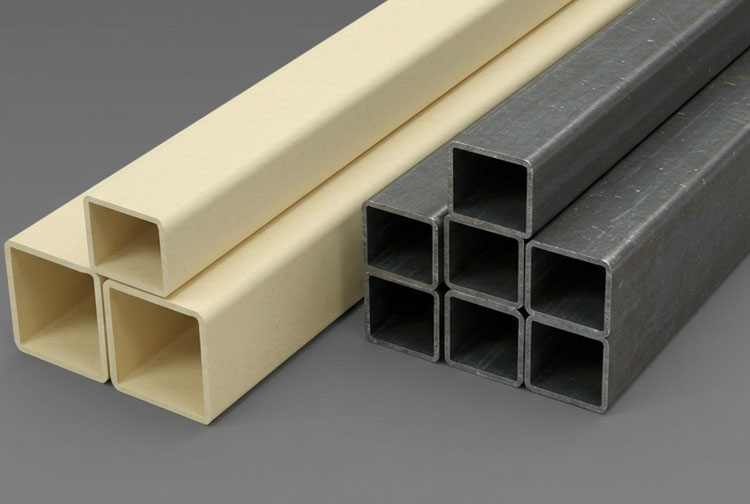In the ever-evolving landscape of agriculture, the materials we use in construction play a crucial role in enhancing efficiency and sustainability. One such material gaining prominence is Fiber Reinforced Polymer (FRP) panels. These panels offer remarkable benefits, making them ideal for modern agricultural buildings.
FRP panels combine durability, lightweight properties, and resistance to harsh environmental conditions, ensuring long-lasting performance. As agriculture adapts to new challenges, they emerges as a reliable solution.
This guide explores the top nine advantages of using FRP panels in agricultural settings, highlighting how they can transform farming operations. Stabilit America is a leading supplier committed to providing top-notch products for quality FRP panels.
1. Exceptional Durability
FRP panels are designed to withstand harsh environmental conditions, including high humidity, extreme temperatures, and corrosive substances. Their robust construction ensures longevity, reducing the need for frequent replacements. This durability translates into lower maintenance costs, making them a cost-effective choice for agricultural buildings.
2. Lightweight Construction
One of the standout features of FRP panels is their lightweight nature. Compared to traditional building materials, FRP panels are significantly lighter, which simplifies the installation process. This ease of handling can reduce labor costs and faster construction times, allowing farmers to focus on their core operations.
3. Superior Resistance to Chemicals
Agricultural environments often expose buildings to various chemicals, including fertilizers and pesticides. FRP panels exhibit excellent resistance to these substances, preventing degradation and ensuring structural integrity. This chemical resistance is crucial for maintaining a safe working environment for employees and protecting valuable equipment.
4. Energy Efficiency
FRP panels can contribute to energy efficiency in agricultural buildings. Their insulating properties help regulate indoor temperatures, reducing the need for heating and cooling systems. This energy efficiency lowers operational costs and promotes sustainability, aligning with modern agricultural practices focused on environmental stewardship.
5. Versatile Design Options
FRP panels are available in various colors, textures, and finishes, allowing for customization to meet specific aesthetic and functional requirements. This versatility makes designing buildings that blend seamlessly into the surrounding landscape easy while fulfilling practical needs.
6. Easy Maintenance
Maintaining frp panels is straightforward and requires minimal effort. Their smooth surface is resistant to dirt and grime, making cleaning easy. This low-maintenance requirement is particularly beneficial for busy agricultural operations, where time and resources are often limited.
7. Enhanced Safety Features
Safety is paramount in agricultural settings. FRP panels are non-conductive and offer fire-resistant properties, reducing the risk of electrical hazards and fire incidents. This feature enhances overall safety for workers and livestock, making FRP an ideal choice for constructing barns, storage facilities, and processing areas.
8. Eco-Friendly Material
As the agricultural industry increasingly focuses on sustainability, using eco-friendly materials becomes essential. FRP panels are recyclable and can be manufactured with minimal environmental impact. Choosing FRP panels supports sustainable practices, contributing to a greener future for agriculture.
9. Cost-Effectiveness
While the initial investment in FRP panels may be higher than some traditional materials, their long-term benefits outweigh the costs. FRP panels’ durability, low maintenance, and energy efficiency result in significant savings over time, making them a smart financial choice for agricultural building projects.
FAQs about FRP Panels in Agriculture
What are FRP panels made of?
FRP panels are made from a combination of fiberglass and resin, which provides strength, durability, and resistance to environmental factors.
How do FRP panels compare to traditional materials?
FRP panels are lighter, more durable, and chemical-resistant, making them superior to many traditional materials in agricultural settings.
Can FRP panels be used for insulation?
Yes, FRP panels have insulating properties that help regulate temperatures, contributing to energy efficiency in agricultural buildings.
Are FRP panels environmentally friendly?
FRP panels can be recycled and are manufactured with a focus on minimizing environmental impact, making them an eco-friendly choice for construction.
Conclusion
The advantages of using FRP panels in modern agricultural buildings are clear. From their exceptional durability and lightweight construction to their eco-friendly attributes and cost-effectiveness, FRP panels offer myriad benefits that align with the needs of contemporary agriculture.
As farms evolve and face new challenges, investing in quality materials like FRP panels becomes essential for maintaining efficiency and sustainability. For those looking to implement FRP panels in their agricultural operations, Stabilit America stands out as a trusted supplier, ensuring access to high-quality products that can enhance any agricultural building project.



































